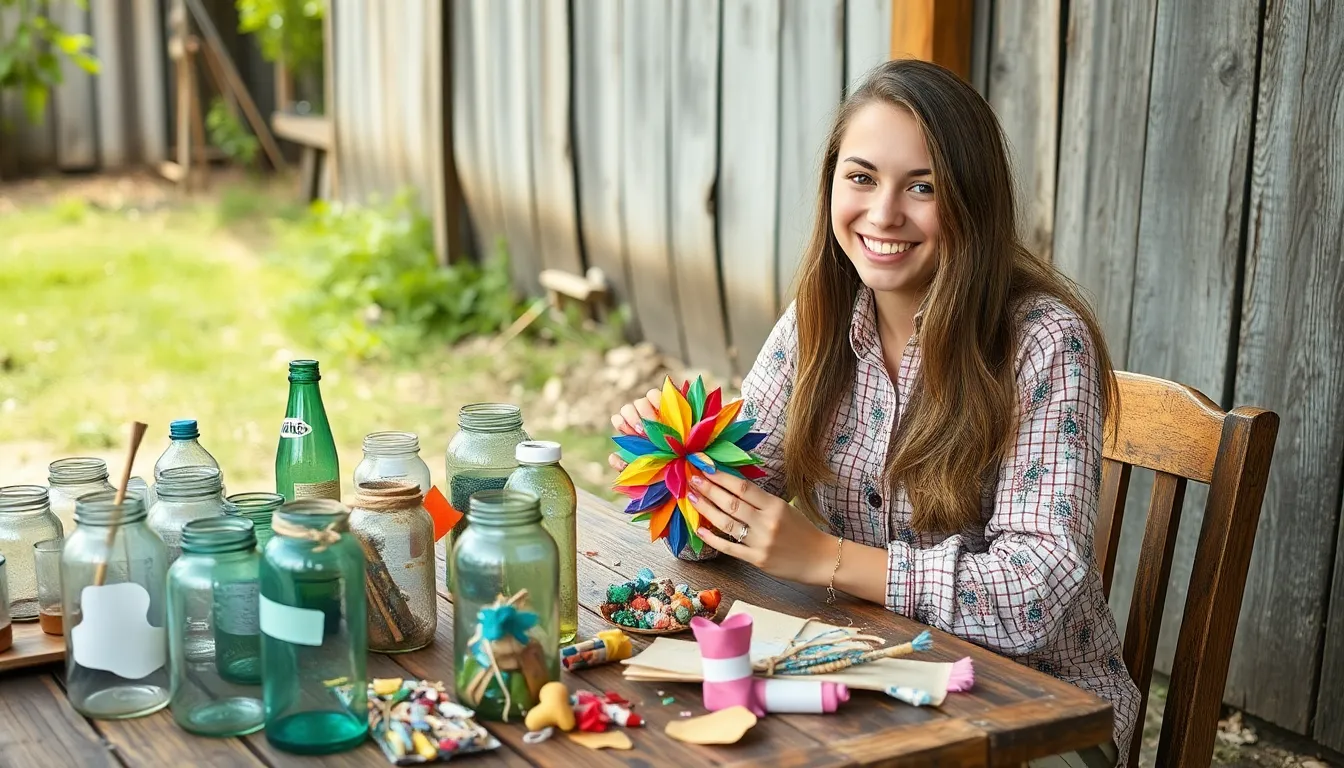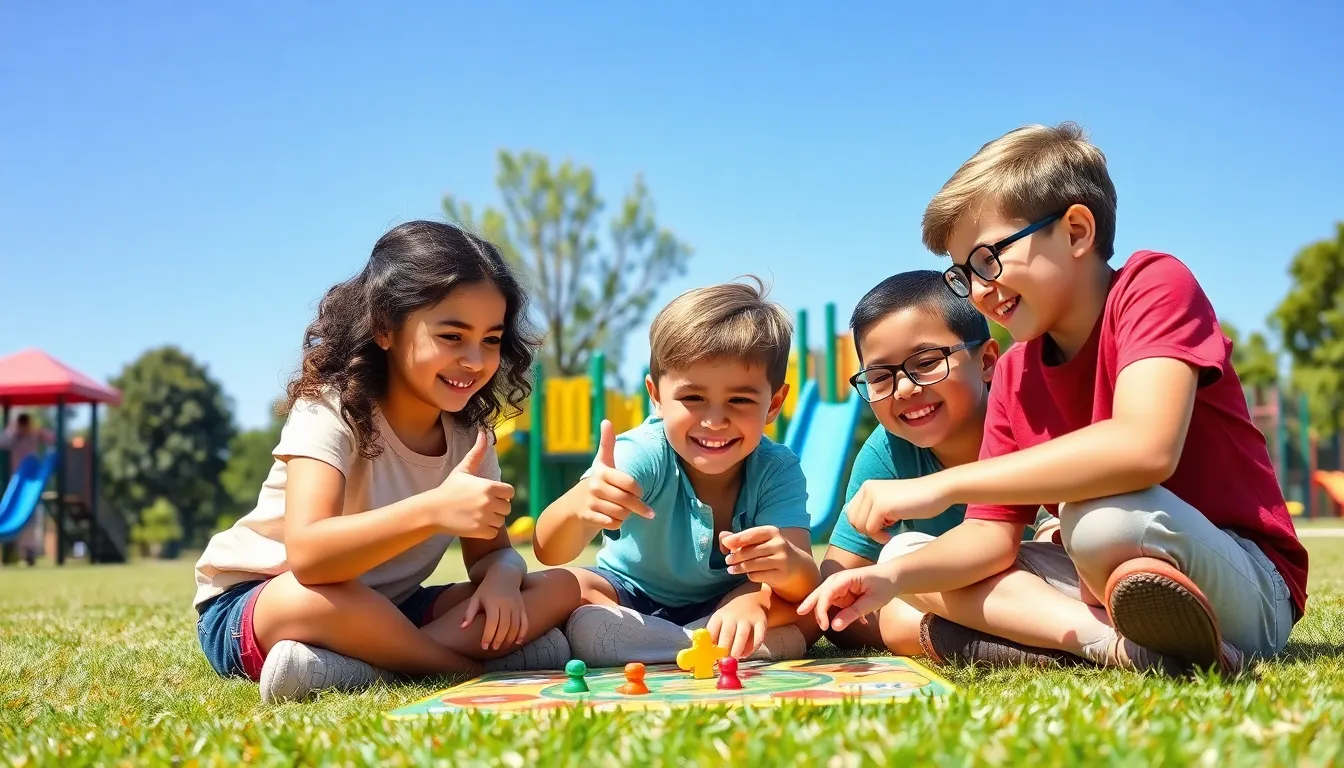In a world where waste seems to pile up faster than laundry, recycled crafts are the superhero we didn’t know we needed. Imagine transforming that empty cereal box into a chic organizer or turning old t-shirts into trendy tote bags. Not only does it save the planet, but it also saves your wallet from the clutches of overpriced decor.
Crafting with recycled materials isn’t just eco-friendly; it’s a creative adventure waiting to happen. It’s about unleashing your inner artist while giving new life to items that would otherwise be tossed aside. So grab those forgotten treasures and get ready to impress friends and family with your newfound skills. Who knew saving the Earth could be this much fun?
Table of Contents
ToggleWhat Are Recycled Crafts?
Recycled crafts encompass creative projects that use materials intended for disposal. Artists transform items like glass jars, plastic bottles, and scrap paper into functional or decorative objects. These crafts promote environmental awareness by demonstrating how waste can find new life.
A wide variety of projects exists within the realm of recycled crafts. Cereal boxes can become unique storage solutions, while old t-shirts inspire trendy tote bags. Everyday materials, such as tin cans, may turn into beautiful planters or candle holders.
Individuals enjoy these activities for their dual benefits. First, they enhance creativity and artistic expression. Second, they contribute to sustainability efforts by reducing landfill waste. Engaging in recycled crafts often results in unique items that reflect personal style and innovation.
Communities increasingly embrace these projects as educational opportunities. Workshops and online tutorials guide participants in creating thoughtful pieces from recyclables. By learning these skills, people gain a greater appreciation for the materials they once discarded.
Overall, recycled crafts serve as a practical solution for managing waste. They foster creativity, save resources, and provide an avenue for community engagement. The satisfaction of making something new from the old motivates many to explore this rewarding craft.
Benefits of Recycled Crafts

Recycled crafts offer numerous advantages, merging creativity with sustainability. The following sections detail the key benefits of engaging in these projects.
Environmental Impact
Recycled crafts significantly reduce landfill waste. By repurposing materials like glass jars, plastic bottles, and scrap paper, individuals can prevent valuable resources from ending up in landfills. Engaging in these activities raises awareness about waste management. Crafting from recycled items promotes a mindset focused on sustainability. Creative projects also minimize the demand for new materials, leading to lower energy consumption. Earth-friendly practices restore ecological balance. Participants inspire others with their innovative uses of discarded items, fostering community action. Workshops and tutorials enhance collective knowledge about sustainable crafting. Overall, these crafts represent a commitment to preserving the environment while encouraging artistic expression.
Economic Advantages
Recycled crafts provide substantial cost savings. Creating useful items from everyday waste materials eliminates the need to purchase new items. Individuals can transform old t-shirts into tote bags or cereal boxes into organizers, significantly lowering their decorating expenditures. Crafting also encourages resourcefulness. Participants often find that making items from recyclables is more economical than retail alternatives. Overall, crafting fosters ingenuity, turning waste into functional art. Communities can benefit from reduced spending on decor when members engage in group crafting. Celebrating creativity this way enhances appreciation for handmade products. Such activities reinforce the notion that thoughtful contributions can lead to economic benefits while maintaining artistic flair.
Popular Types of Recycled Crafts
Recycled crafts offer a wide range of possibilities, utilizing everyday materials to create useful and beautiful items. Here’s a look at some popular types.
Paper Crafts
Paper crafts include a variety of projects that repurpose cardboard, old newspapers, and scrap paper. Cardboard boxes transform into organizers, photo frames, or even decorative art pieces. Old magazines can become collages, greeting cards, or unique bookmarks. By cutting and folding, individuals can create functional items while reducing paper waste. Projects like paper mache and origami also provide creative outlets. These crafts not only beautify spaces but also encourage recycling and awareness of paper waste.
Plastic Crafts
Plastic crafts focus on turning used plastic containers, bottles, and bags into new creations. For instance, plastic bottles can become planters, bird feeders, or storage bins. With creativity, individuals can shape plastic bags into sturdy tote bags or woven mats. Many workshops teach techniques for melting or cutting plastic, inspiring innovative projects. These crafts showcase the potential of common plastic items, reducing landfill impact while promoting resourcefulness in crafting. Owners of these items often appreciate the blend of practicality and style these recycled pieces offer.
Fabric Crafts
Fabric crafts involve using old clothing, scraps, and textiles to create new items. Upcycling t-shirts into tote bags or pillow covers stands as a popular option. Individuals can also make quilts or patchwork designs from leftover fabric. Many choose to repurpose worn-out jeans as durable bags or stylish home decor. These projects emphasize creativity while addressing the problem of textile waste. Community groups often share patterns and techniques, making it easier to get started and inspire others. Engaging with fabric crafts enables individuals to combine sustainability with unique, personalized fashion.
Tips for Creating Recycled Crafts
Creating recycled crafts starts with thoughtful planning. Engage in resourcefulness and seek materials that might otherwise be discarded.
Finding Materials
Gathering materials for recycled crafts can happen anywhere. Local households often provide excellent resources. Common items include glass jars, plastic containers, and scrap paper. Thrift stores can also supply used clothing and furniture for upcycling projects. Attending community events may lead to the exchange of materials too. Collaborating with friends or neighbors can yield a treasure trove of recyclables. By exploring various sources, individuals enhance their crafting options while promoting sustainability.
Tools and Techniques
Using the right tools simplifies crafting projects. Scissors and glue are essential for cutting and adhering materials. Craft knives can add precision to detailed work. Consider using a sewing machine for fabric items, as it allows for durable creations. The technique of decoupage creates stunning effects using paper and mod podge. Painting and decorating can personalize recycled items instantly. Individuals exploring different techniques encourage experimentation and creativity in their projects. Prioritizing these tools and methods enhances crafting success and enjoyment.
Recycled crafts offer a unique blend of creativity and sustainability. By transforming everyday items into functional art, individuals not only reduce waste but also cultivate their artistic skills. This rewarding practice fosters community connections and inspires others to join in the movement toward a more eco-friendly lifestyle.
As more people embrace recycled crafting, the potential for innovation and expression continues to grow. The satisfaction of creating something beautiful from what would otherwise be discarded encourages a shift in perspective about waste. Engaging in these projects not only benefits the environment but also enriches lives through creativity and resourcefulness. It’s a journey worth exploring for anyone looking to make a positive impact.




